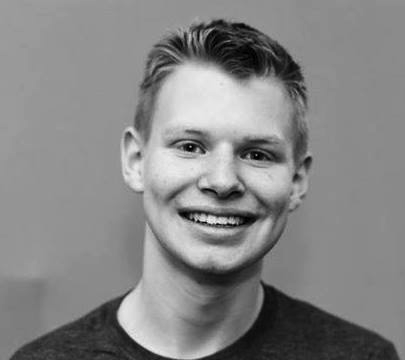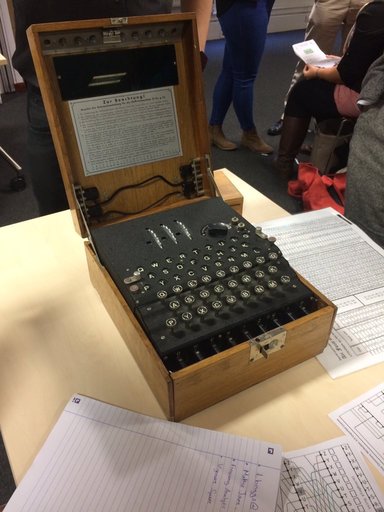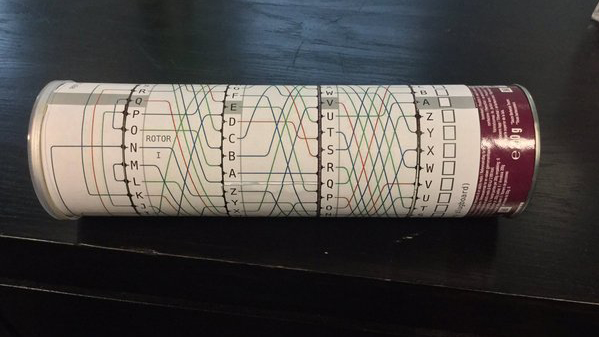Scholars Celebratory Event - Tom Briggs’s Cryptography Workshop
 It’s not every day you get an email asking you to bring an empty Pringles tube, scissors and a glue stick, to a maths conference, without giving any form of plausible explanation whatsoever. How enigma-tic! But I suppose when you’re on the journey to becoming a newly qualified maths teacher, you just have to expect the unexpected. And so, to the complete and utter bemusement of anyone following me on Snapchat, I sat on the train to Aston University armed with these materials wondering why I unquestioningly obeyed that strange, strange email.
It’s not every day you get an email asking you to bring an empty Pringles tube, scissors and a glue stick, to a maths conference, without giving any form of plausible explanation whatsoever. How enigma-tic! But I suppose when you’re on the journey to becoming a newly qualified maths teacher, you just have to expect the unexpected. And so, to the complete and utter bemusement of anyone following me on Snapchat, I sat on the train to Aston University armed with these materials wondering why I unquestioningly obeyed that strange, strange email.
As to why, it will remain an enigma…
After signing in at the desk, getting a complimentary cup of tea and being handed a shedload of free stuff (I mean, why else does anyone go to these sorts of conferences?), I was almost at the point at finding out the answer to my question. All that stood before me, both metaphorically and literally, was a man talking about using mathematics to hide secrets.

This man was Tom Briggs, Learning Manager at Bletchley Park, the site where British men and women worked
in
se
cret to decrypt Nazi codes during the Second World War. So what was the theme of his workshop? Cryptography Past, Present and Future. Yes, I was completely surprised by this shocking revelation as well.
What followed was a fascinating and informative whistle-stop tour through various types of cryptography used throughout the ages, ranging from Morse code, Affine shifts, Caesar ciphers and the RSA (that’s Rivest–Shamir–Adleman, mathematical acronym fans!) algorithm! Tom even had the idea to encrypt the learning outcomes of the talk, something so ingeniously geeky that anyone who didn’t laugh at that slide really should’ve been shown the door.
In addition, Tom brought one of the real-life Enigma machines (if you’ve just figured out the pun in paragraph one then well done you!) used at Bletchley Park, which led to lots of ooh-ing and ahh-ing and people taking photos of themselves with the Enigma machine. Tragically, it was not the one used by Benedict Cumberbatch, the famous actor who portrayed the mathematical icon Alan Turing in the Oscar-winning feature film, The Imitation Game. But at least Tom met Benedict in real life so I guess that just about makes up for that disappointing news.
Why do I need a Pringles tube?
After all this exciting stuff, I finally found out why I needed to bring that Pringles tube, scissors and glue stick – we were going to make our very own Enigma machines! We all got some paper rotors and reflectors to cut out and stick onto the Pringles tube so that we could all finally encrypt the word ‘CAT’ to an extremely high level of security. Given all the mysterious build-up to the workshop, it was nice to finally have a satisfying payoff.

- By Evan Jones, Maths Scholar